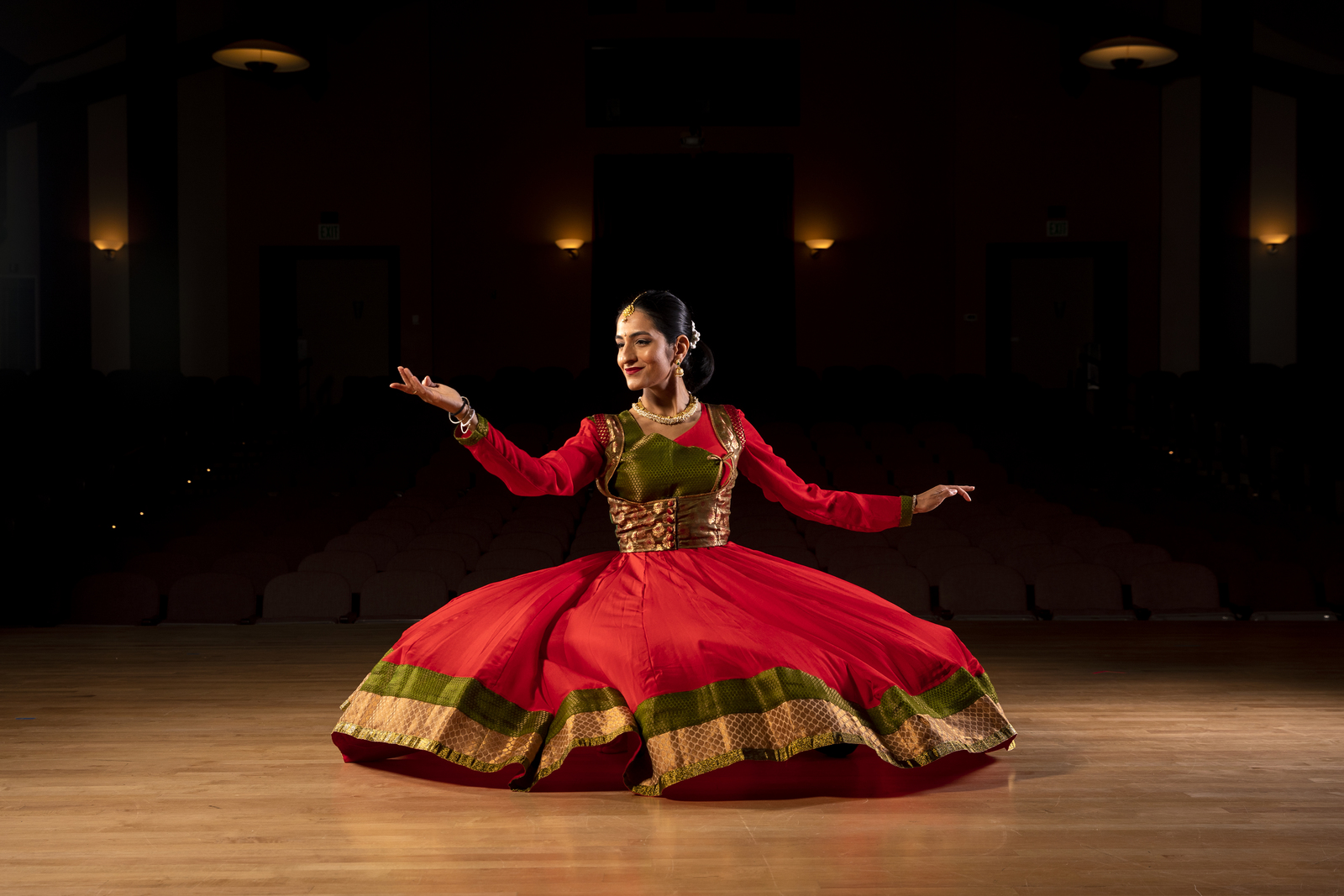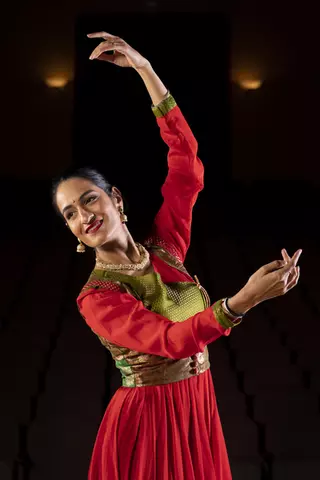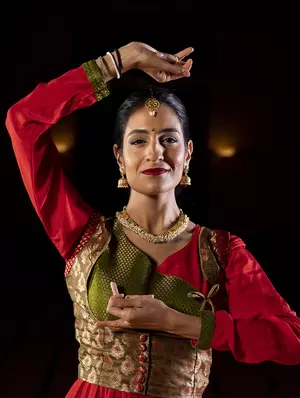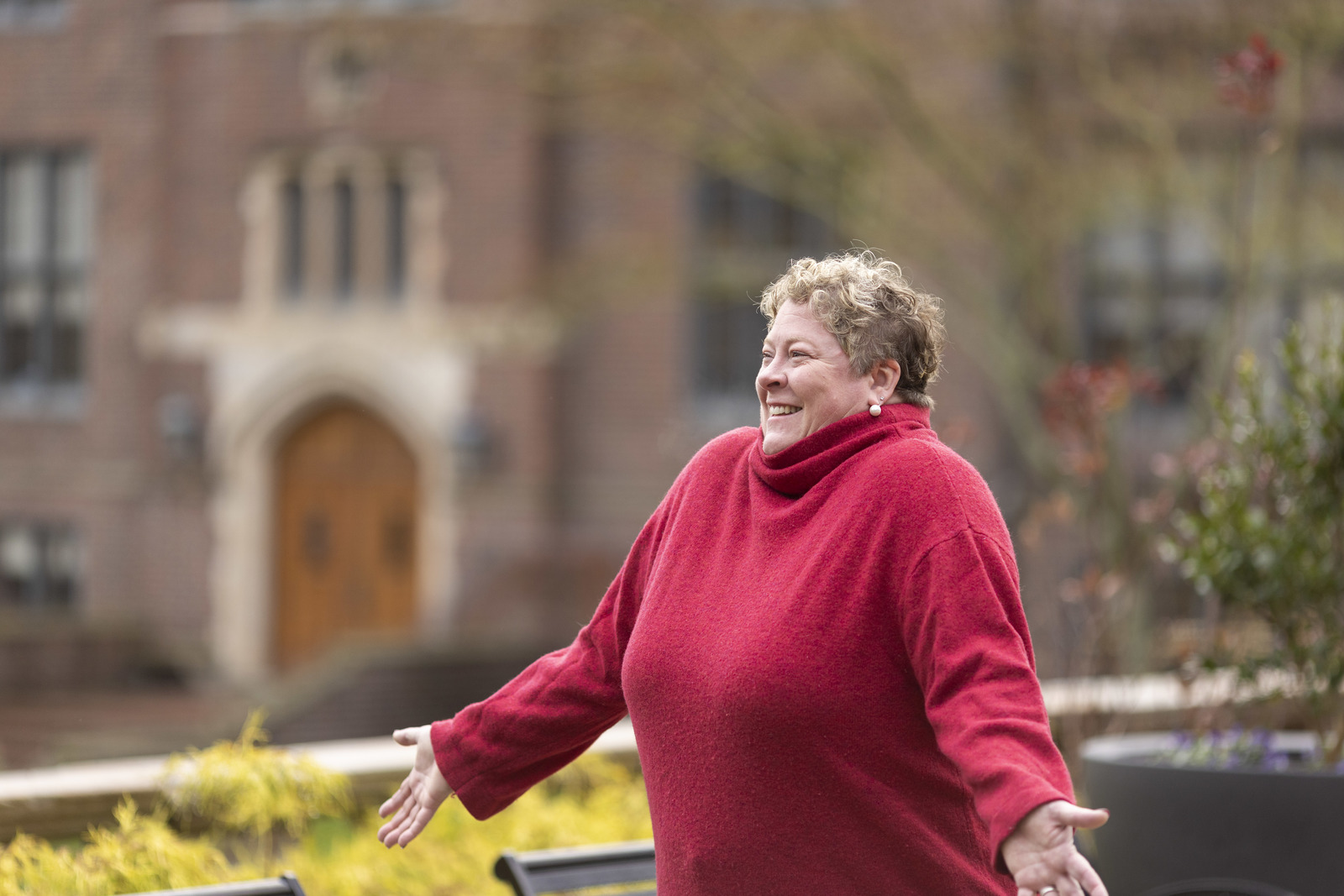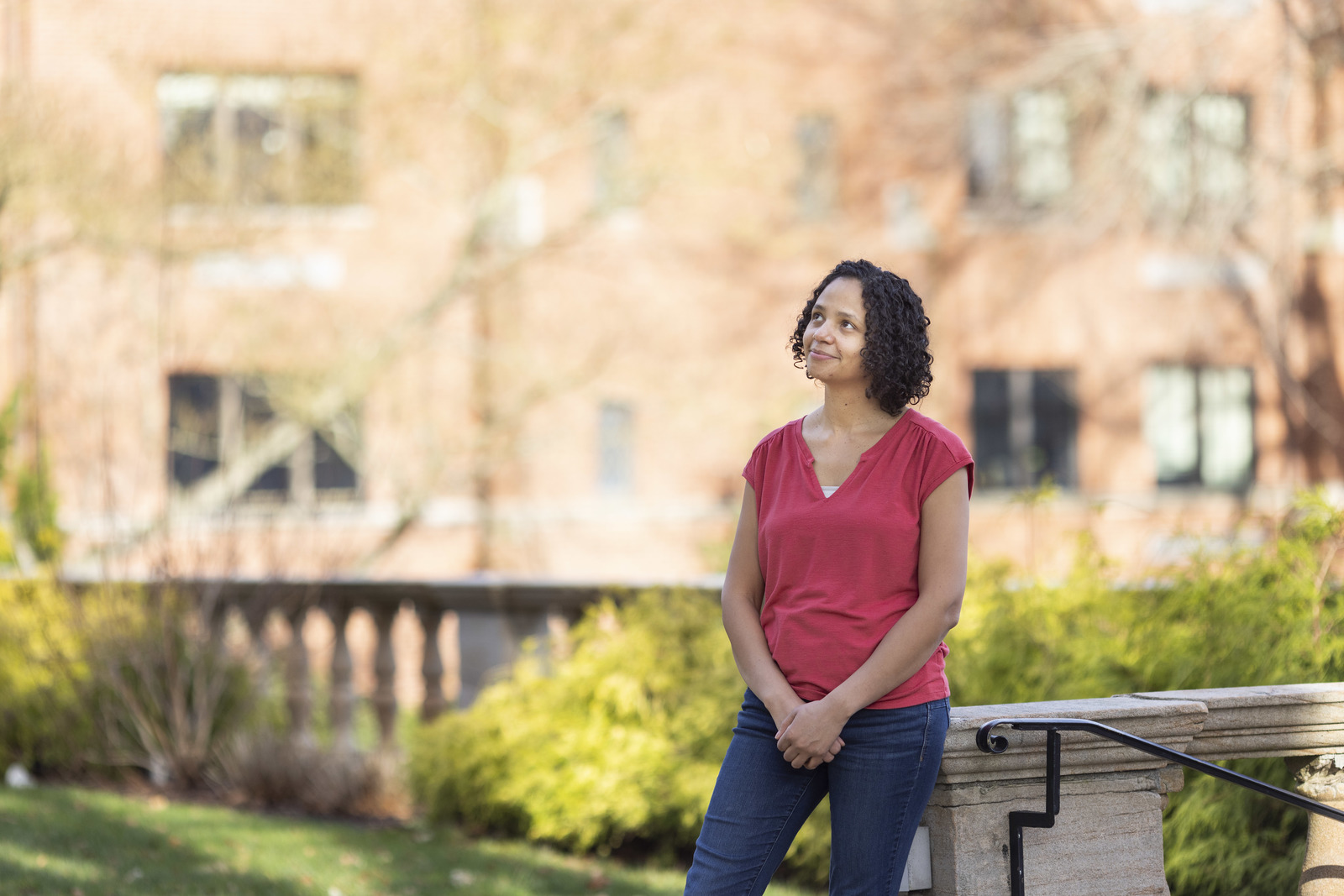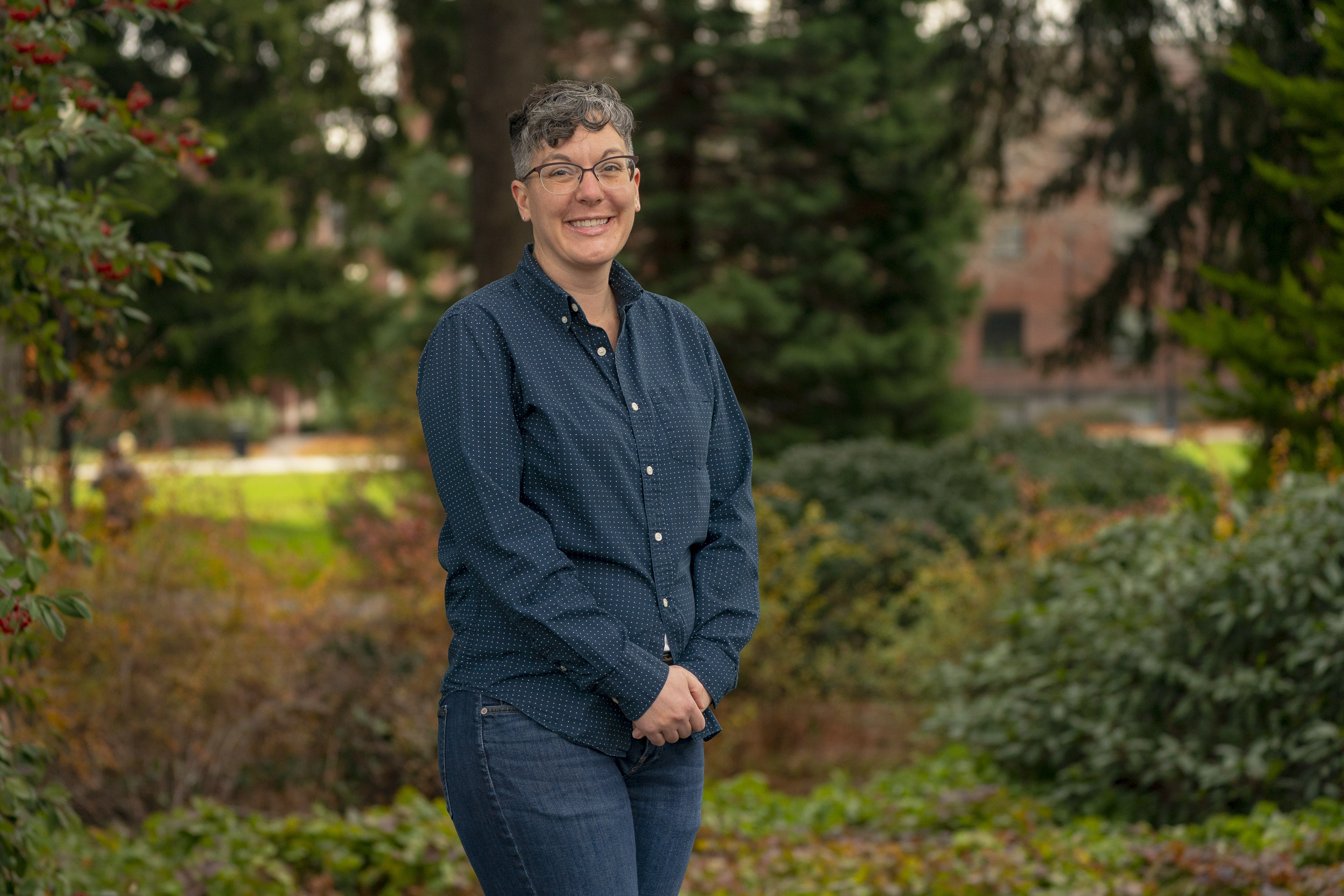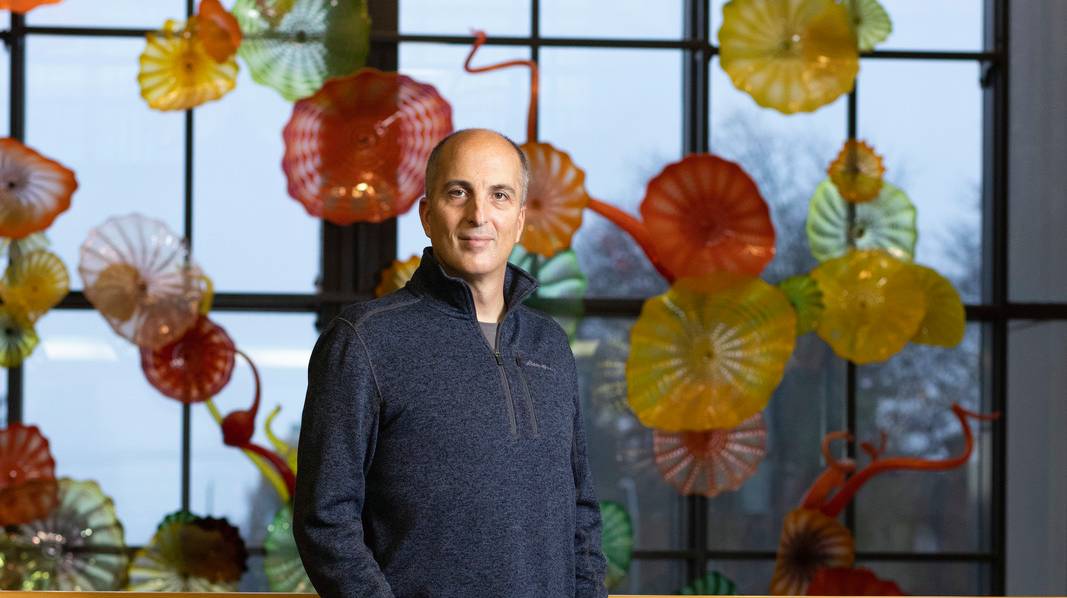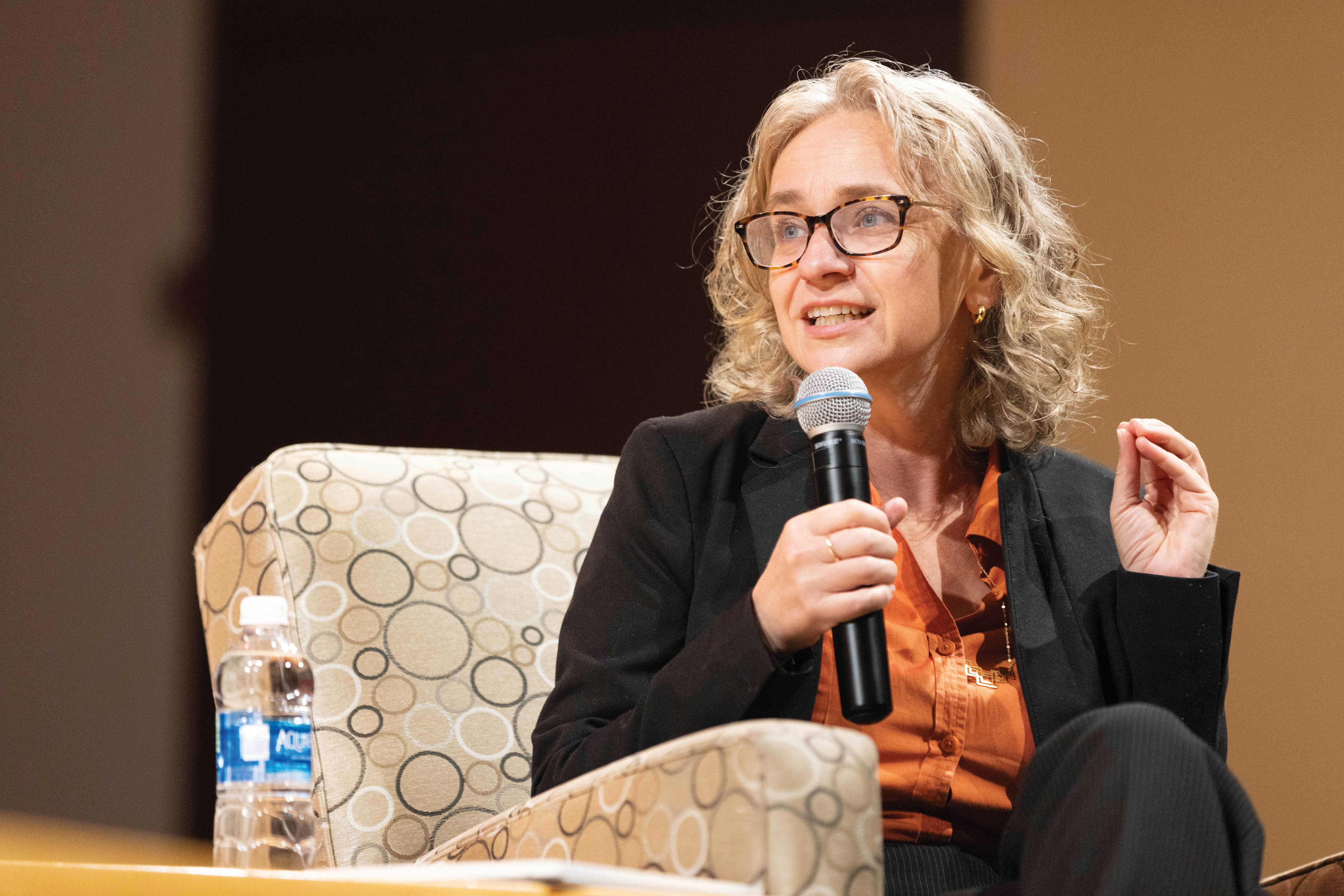Through her exploration of Kathak, a centuries-old classical dance form from India, Assistant Professor Ameera Nimjee experiences South Asia’s performing arts as vibrant, cosmopolitan, and ever changing.
On a shelf in Ameera Nimjee’s study sits a small, garlanded statue of Nataraj, the Hindu god of dance. It’s an appropriate icon for an Indian classical dancer to own: Nimjee, assistant professor in the School of Music and the university’s first ethnomusicologist, is trained in Kathak, an Indian classical dance form known for its crisp, rhythmic footwork and evocative storytelling through hand movements and facial gestures. She is every inch the dancer: graceful, poised, expressive with her hands and eyes—even though she didn’t begin dancing until she was 18.
The statue has been with her since she began studying Kathak in 2006. She keeps it next to an etching of a sura, a Qur’anic verse, because to Nimjee (who is Muslim) these artifacts embody South Asia: Both the region and its many art forms are a mix of religious and cultural practices, languages, and traditions that have evolved through history. The result is a shared wealth that, Nimjee says, is “messy but beautiful.” And, as she’s learned through her exploration of Kathak, that wealth transcends the many boundaries, visible and invisible, that even now—almost 75 years since the partition of British India—cut deep across the region, demarcating, in particular, the ours-and-theirs between India and Pakistan, Hindus and Muslims.
